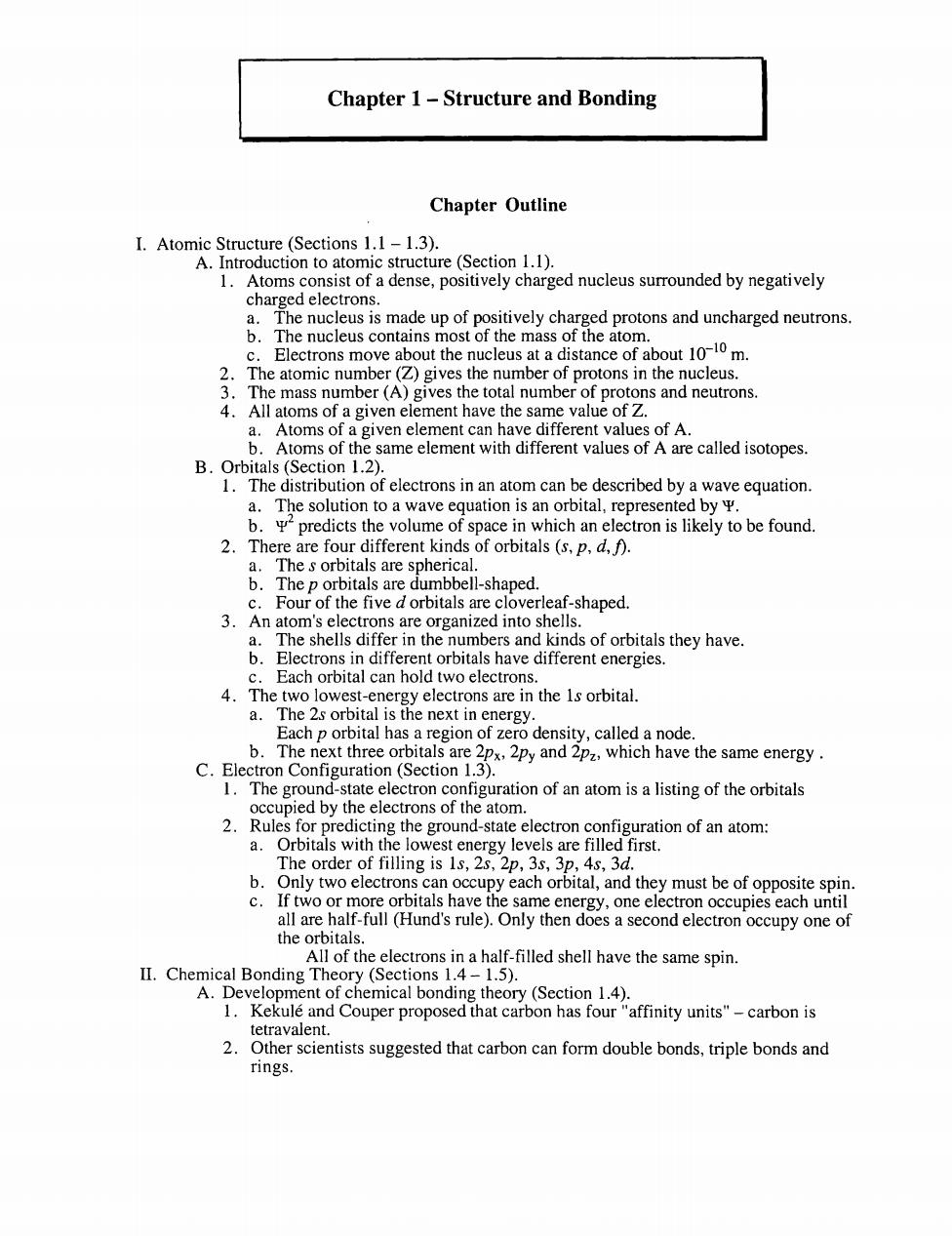正在加载图片...

Chapter 1-Structure and Bonding Chapter Outline I.Atomic Structure(Sections 1.1-1.3). A.Introduction to atomic structure(Section 1.1). 1.Atoms consist of a dense,positively charged nucleus surrounded by negatively charged el made up of positively charged protons and uncharged neutrons b.The nucleus contains most of the mass of the atom. Electrons move about the nucleus at a distance of about 101m. nucleus. 4.A s and neutrons a.Atoms of a given element can have different values of A. Aroms of the same element with different values of A are called isotopes. on of electrons in an atom c an be described by a wave equation The solution to a wave equation is ar rhital re sented by b.predicts the volume of space in which an electron is likely to be found. 2.There are four different kinds of orbitals (s,p,d,A). a.The s orbitals are spherical. b.2 ell-shaped 3.An atoms leaf-shaped s are organized into shell The shells differ in the numbers and kinds of orbitals they have. s have different energies. The che 1s orbital a. next in enery. Each p orbital has a region of zero density,called a node b. C.Ele ee or itals are pand pwhich have the same energy configuration of an atom is a listing of the orbitals occupied by the electrons of the atom. 2.Rule g the ground-state electron configuration of an atom: a.Ort de ergy le · b.Only two electrons can occur all are ha henhalf-filled shell have the sam spin II.Chemical Bonding Theory (Sections 1.4-1.5). hemical bonal ng theory (Section 1.4). ravalent ouper propose affinity units"-carbon is 2.Other scientists suggested that carbon can form double bonds,triple bonds and rings